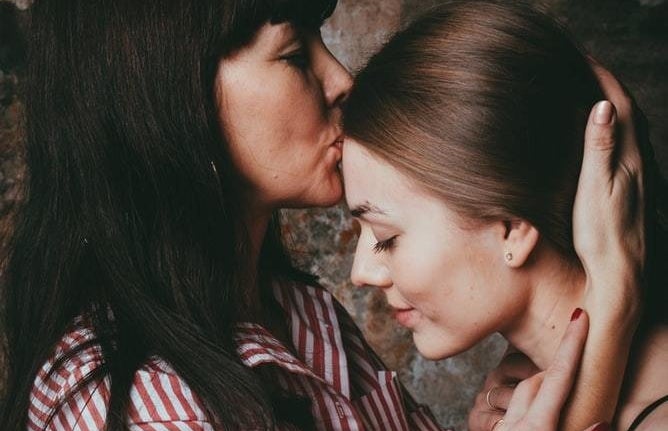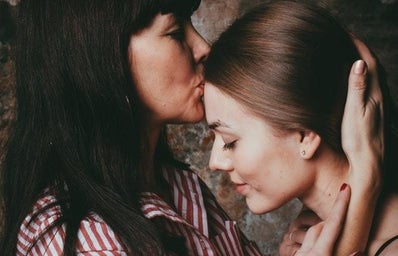The ‘mother-daughter relationship’ has been the subject of many works, be they for the purpose of science or artistic expression. The well-known theorist of the ‘psychoanalytic theory of personality’ (which is, admittedly, an object of morbid curiosity for the layman), Sigmund Freud, placed the entire onus of female psycho-social development on early relationship with the mother, followed by the same with the father. Our understanding of the significance of ‘archetypes’ in the development of the human unconscious also comes from the varied interpretations of fairy tales and myths by Freudian and feminist theorists.
The story of Demeter, the Greek goddess of harvest and fertility, and her beloved daughter Persephone, is of the utmost importance in understanding the representation of the mother-daughter bond in myths and folktales. While both Demeter and Persephone have been referred to in Freud’s works separately (in “A Mythological Parallel to a Visual Obsession” and “The Theme of the Three Caskets” respectively), the relationship between the two was not focussed on. In Freud’s work, as in many children’s stories from the western world (the tales of Brothers Grimm and Hans Christian Andersen being the most important), the daughter’s separation from the mother is seen as the beginning of maturation, when the daughter realises that she cannot live in her mother’s shadow forever and has to develop her own separate ego-identity.
The Demeter-Persephone story from Greek mythology shows the mother (Demeter) proactively trying to get her daughter (Persephone) back after her abduction. While in this sense, it may appear that the story fixates more on the mother’s perspective than the daughter’s, its whole fabric suggests that the daughter and the mother are one and that their experiences both reciprocate and replicate each other’s. Demeter’s response to Persephone’s disappearance has elements of both narcissism and object-loss: she becomes sorrowful, depressed, and bitterly indignant, showing perfectly the stages of mourning and melancholia that Freud underlined in 1917. Persephone, who has been abducted by Hades, also ‘pines for her mother amongst the dark shades of the dead’ and rejoices at the prospect of her rescue. After being restored to her mother, however, she still has an obligation to periodically return to the Underworld, which replicates the later-day fairy tale symbolism of the irreversible transition of the female protagonist into adolescence through maternal separation, followed by a permanent entry into the mainstream patriarchal society.
Most of the fairy tales which we have grown up with, like “Cinderella”, “Snow-White” and “Rapunzel”, while serving to indoctrinate children with gendered roles, also have some other commonalities, the most visible one being the bipolarity drawn between the ‘good mother’ and the ‘evil step-mother’. Feminist writers like Andrea Dworkin and Simone de Beauvoir have pointed out that it is not the angelic but the demonic images of the mother that prevail, with the ‘good mother’ meeting an early death and being eclipsed by her anti-thesis, the evil step-mother, who competes with the female protagonist in vying for the attention, power, and status of the father/king.
Writer-artist Jo Austen, whilst referring to fairy tales like “Cinderella”, “Baba Yaga” (a Russian folktale), and “Mother Holle” (of Brothers Grimm fame), assigned symbolic meanings to the different events occurring in the protagonist’s life: the death of the birth-mother or the ‘good mother’ showcases the daughter’s first initiation into ‘darkness’, or the beginning of adolescence. The entry of the step-mother, the complete anti-thesis of the birth-mother, symbolises the challenges that will enter the daughter’s life, which will serve as learning experiences and push her further along her path to becoming a well-rounded adult. This is followed by a reward, like a dress for the ‘royal ball’ which becomes a pathway to escape the drudgery that the protagonist is forced into by her step-mother; and after further trials and tribulations, the final reward comes in the form of the final transition of the protagonist from her mother’s spiritual shadow into the ‘royal household’, a manifestation of the patriarchal society, the socially-accepted ‘happily ever after’.
According to Austen, the ‘step-sisters’ are a depiction of the consequences of a failed maternal separation. When the step-mother sees the protagonist succeeding and wishes the same for her daughters minus the hard work, grisly consequences can be seen, ranging from humiliation to disfigurement, and even resulting in death.
A literary classic, Charles Dickens’ “Great Expectations” (1860), takes forward the ‘good mother/step-mother’ bipolarity by showing the male protagonist’s different experiences with the maternal figures in his life. Here too, the birth-mother dies early and the ‘evil step-mother’ role is taken up by his sister (Mrs. Joe Gargery), who is shown to be high-handed and cruel, both to him and his uncle (her husband, Joe Gargery). The unique element was the uncle, who was depicted as a maternal figure to the protagonist, being ‘feminised’ both by his ‘subordination’ to his wife and his kindness and nurturing attitude towards his nephew. On the other hand, there is the aristocratic old lady Miss Havisham, a recluse, who uses her adopted daughter Estella to exact revenge upon society (the male society, to be exact), for her humiliating abandonment on her wedding day, by teaching her to be domineering and manipulative rather than servile, obedient and emotional in her future romantic relationships. While the maternal figures get a ‘happily ever after,’ the ‘evil step-mother’ gets a grisly death in the end.
Modern depictions of mother-daughter relationships are very different from the classical ones, with no clear boundaries being drawn between the ‘good mother’ and the ‘evil step-mother’ in creating two separate figures. In fact, mothers are now showcased as human beings and not as archetypes, with their concern and care for their children conflicting with their own personal interests and insecurities. A good example of this is “Gilmore Girls” (2000-07, 2016), a TV show which depicts two generations of mother-daughter relationships in great detail, with all its warmth, connectedness, disconnectedness and alienation. Some examples from Indian filmography of the same, where the mother is not always a role model but oftentimes a learner, just like her daughter, are “Darlings” (2022), and “Nil Battey Sannata” (2015), two extremely different films hinging upon the similarity of the mother using trial-and-error methods to set her daughter’s life right.
The depiction of the maternal figure in a nuanced form removes the need to create two extreme images of the ‘good mother’ who is socially compliant and the ‘evil step-mother’, who is villainised for not fulfilling the social norms of femininity and motherhood. This evolution in the depiction of female relationships will hopefully lead to better stories for future generations, wherein human relationships are shown for how they actually are: human, and not archetypical stereotypes.


